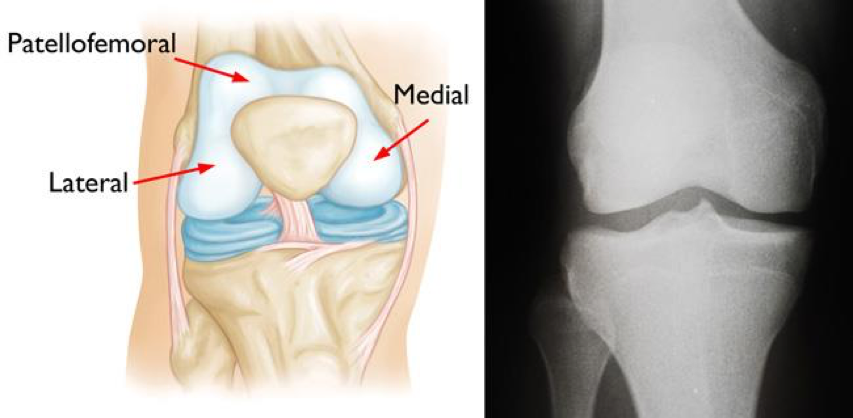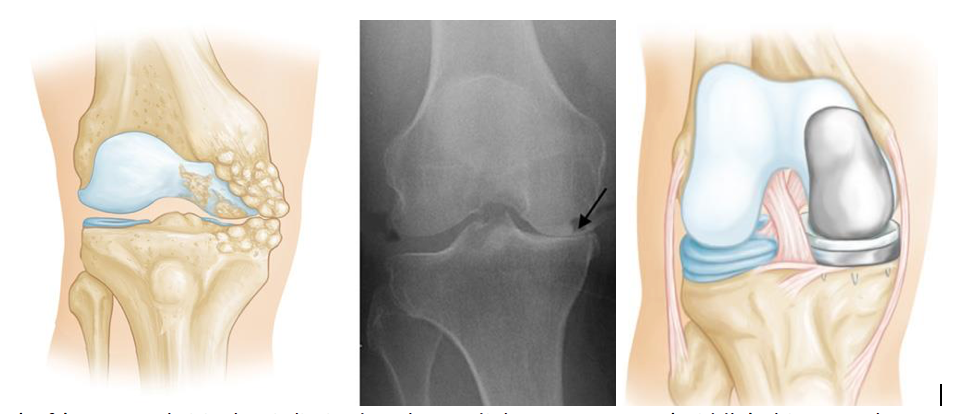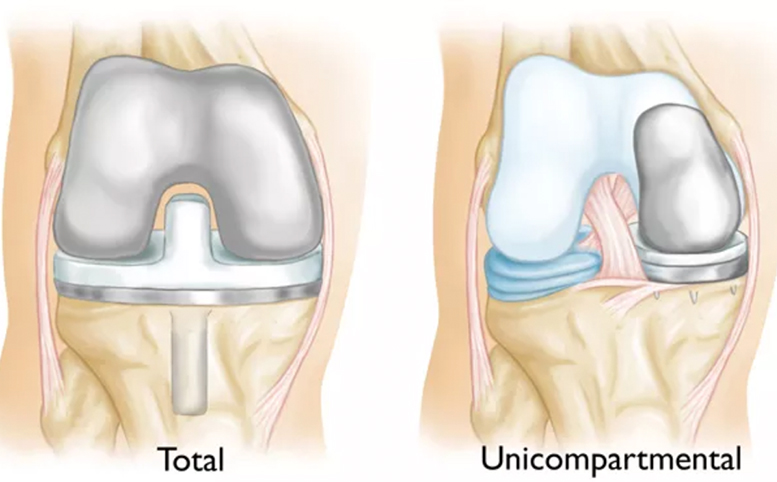Click on the links below to find out more
Unicompartmental (Partial) Knee Replacement
OVERVIEW
During knee replacement surgery, damaged bone and cartilage is resurfaced with metal and plastic components . Unicompartmental knee replacement (also called “partial” knee replacement) differs in that only a section of the knee is resurfaced. This procedure can be a viable alternative to total knee replacement in cases where the disease is limited to a portion of the knee.
Because a partial knee replacement is a more limited procedure, patients spend less time in the hospital and return to normal activities quicker than total knee replacement patients.
ANATOMY
During arthritis, the cartilage protecting the bones of the knee is slowly worn away, either in a single area of the knee or throughout the entire joint.
Key to the diagnosis is locating the arthritis within the knee, divided into three major components:
- Medial compartment (the inside part of the knee)
- Lateral compartment (the outside part)
- Patellofemoral compartment (the front of the knee between the kneecap and thighbone)

(Left) A normal knee joint: The medial, lateral, and patellofemoral compartments are shown with red arrows. (Right) An x-ray of a normal knee joint showing healthy space between the bones.

(Left) Osteoarthritis that is limited to the medial compartment. (Middle) This x-ray shows severe osteoarthritis with “bone-on-bone” degeneration in the medial compartment (arrow). (Right) A Unicompartmental Knee Replacement.
Osteoarthritis
Unicompartmental knee replacement may be a viable choice where advanced osteoarthritis is limited to a single compartment of the knee. During unicompartmental knee replacement, only the affected compartment is replaced with metal and plastic, while any healthy cartilage and bone – as well as all ligaments – are preserved.
Advantages of Partial Knee Replacement
According to multiple studies, a majority of appropriate candidates for unicompartmental knee replacement have achieved positive health outcomes.
The advantages of partial knee replacement over total knee replacement include:
- Quicker recovery
- Less pain after surgery
- Less blood loss
Additionally, as healthy bone, cartilage and ligaments are retained, many patients report that unicompartmental knee replacement results in a more natural feeling joint in comparison to a total one. Patients with a unicompartmental knee replacement report that unicompartmental knee replacements also kneel and bend better .
Disadvantages of Partial Knee Replacement
The disadvantages of partial knee replacement compared with total knee replacement include:
- Slightly less predictable pain relief
- A potential need for more surgery. For example, should arthritis develop in natural parts of the knee, a total knee replacement may be necessary.

An advantage of partial knee replacement over total knee replacement is that healthy parts of the knee are preserved, which helps to maintain more “natural” function of the knee
Candidates for Unicompartmental Knee Replacement
If your osteoarthritis has advanced and nonsurgical treatment options are no longer relieving your symptoms, Mr Slattery may recommend knee replacement surgery.
To qualify as a candidate for unicompartmental knee replacement, the patient’s arthritis must be limited to a single compartment of the knee. In addition, if you have any of the following characteristics, you may not be eligible for the procedure:
- Inflammatory arthritis
- Significant knee stiffness
- Ligament damage
When backed up by proper patient selection techniques, unicompartmental knee replacement shows excellent medium- and long-term results in patients of all ages.

Dr David Slattery
FRACS MBBS (Hons) LLB FAOrthA
Dr David Slattery is an orthopaedic surgeon based in Melbourne with over 10 years of experience, with a special focus on hip and knee joint preservation and replacement. With qualifications in both medicine and law, he brings a unique and comprehensive approach to patient care. His surgical techniques are minimally invasive and evidence-based, designed to reduce pain and enhance recovery.
Trained in leading institutions across Europe and the USA, Dr Slattery offers advanced treatments for a wide range of joint conditions. He is deeply committed to patient outcomes and takes pride in tailoring treatment plans to each individual. Whether you’re an athlete or seeking relief from chronic joint pain, his goal is to restore function and improve your quality of life.







